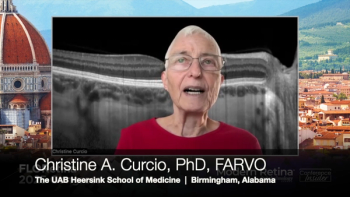
RP modulation with stem cells
Stemedica Cell Technologies, Inc., (Stemedica),a manufacturer and developer of clinical grade allogeneic adult stem cell technology, has discovered a significant breakthrough in the use of human stem cells and stem cell factors for the potential treatment of degenerations of the retina and retinal pigmented epithelium.
Stemedica Cell Technologies, Inc., (Stemedica),a manufacturer and developer of clinical grade allogeneic adult stem cell technology, has discovered a significant breakthrough in the use of human stem cells and stem cell factors for the potential treatment of degenerations of the retina and retinal pigmented epithelium.
According to one of the study's Principle Investigators, Dr Paul Tornambe, "The results from this pre-clinical experiment are exciting. It allows researchers and clinicians to push the envelope in the quest to use stem cells to modulate diseases like Retinitis Pigmentosa."
The study team was comprised of Edwin Boldrey, MD, a Retina and Vitreous Specialist from Northern California and Charter Member of American Society of Retina Specialists and by Paul Tornambe, MD, of Retinal Consultants in San Diego, California.
Dr Tornambe identified several observations that resulted from the group's efforts, "There were two very encouraging findings: RPE stem cells injected into the suprachoroidal space prevented the animal's RPE cell's degeneration as well as preventing degeneration of the overlying photoreceptors proven by very objective ERG testing and histopathology. Secondarily, and even more interesting, is that the fellow contra lateral eye also showed a beneficial effect. This crossover effect suggest this treatment stimulated upregulation of other factors, yet unknown, which decreased the rate of degeneration in the fellow eye. Degeneration of RPE cells occur in many other human retinal diseases such as age related macular degeneration. It is very important to temper initial enthusiasm with the test of time, however, this study strongly suggests, at least in this animal model, that certain kinds of stem cells and factors can modify a disease process."
The 18 month pre-clinical study was implemented at the Fyodorov Eye Institute using Stemedica's proprietary multiple cell technology. Three different types of human stem cells (hSC) were used in the study retinal pigment epithelium (RPE), neural (NSC) and cilliary body (CB) all obtained from human donor tissue. Various cells were injected into rats with hereditary pigmented degradation of retina. One eye of each participating rat served the treatment eye and the other eye served as the control eye. Healthy non-dystrophic and non-treated (normally dystrophic) animals were also used as independent control groups. Electroretinography (ERG) and immunohistochemical (ICH) analysis was performed on both eyes. "What is very impressive is the immune privileged feature of all three kinds of human stem cells (RPE, CB, NSC) in xenotransplantation. This immune privilege amplifies the significant promise of allogeneic donor stem cells in the treatment of retinal degenerative diseases," stated Dr Edwin Boldrey.
Newsletter
Get the essential updates shaping the future of pharma manufacturing and compliance—subscribe today to Pharmaceutical Technology and never miss a breakthrough.










































